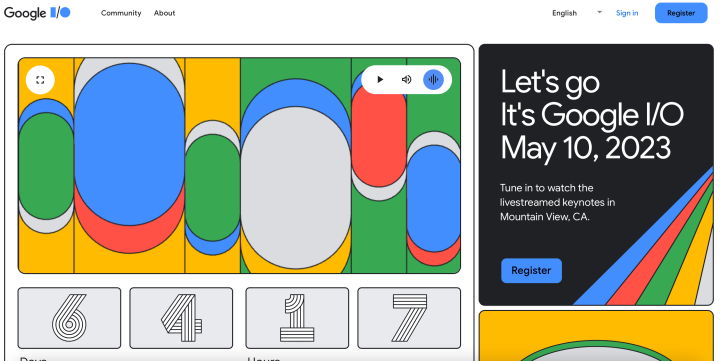It’s that time of year once again. The days are getting longer, the gray skies of winter are slowly fading away, and it’s almost time for another Google I/O. While it’s a given that we have a new I/O each year, Google always puts on a little show when announcing the date for the next one. And now, we officially know when Google I/O 2023 will take place.
The opening keynote for this year’s I/O is taking place at the Shoreline Amphitheater in Mountain View, California. In its email confirming the time and date, Google says, “Join a select audience to learn about Google’s latest innovations and developer solutions that help you work smarter and improve productivity.” The opening keynote for I/O 2023 — where most of the big news and announcements are revealed — kicks off at 10 a.m. PT on May 10.

Google is inviting some developers and media/press outlets to attend the keynote in person, but like in past years, anyone will be able to watch the event online as a live stream for free. Furthermore, if you’re interested in attending any of the “100-plus on-demand technical sessions,” you can register for free on the Google I/O 2023 website to access those.
While Google I/O is a developer-focused event, it is typically home to big announcements that developers and non-developers alike care about. One of the main talking points this year should be Android 14. Google already released the first developer preview of Android 14, and we should get a much closer look at it during I/O. Also, expect to hear plenty about the company’s ChatGPT competitor, Google Bard.
Google I/O 2023 should see a few hardware announcements, too. The Pixel 7a is almost certainly going to make an appearance, as will the Pixel Tablet. There’s also a chance we’ll get to see the Pixel Fold, but you may not want to hold your breath too much for that one.
You can visit the Google I/O 2023 website now to register for the event for free.
Editors' Recommendations
- The 6 biggest announcements we expect from Google I/O 2024
- This Google Pixel 8a leak just spoiled everything about the phone
- Google Pixel Fold 2: news, rumored price, release date, and more
- We finally know the exact date of Google I/O 2024
- 5 phones you should buy instead of the iPhone 15 Pro



